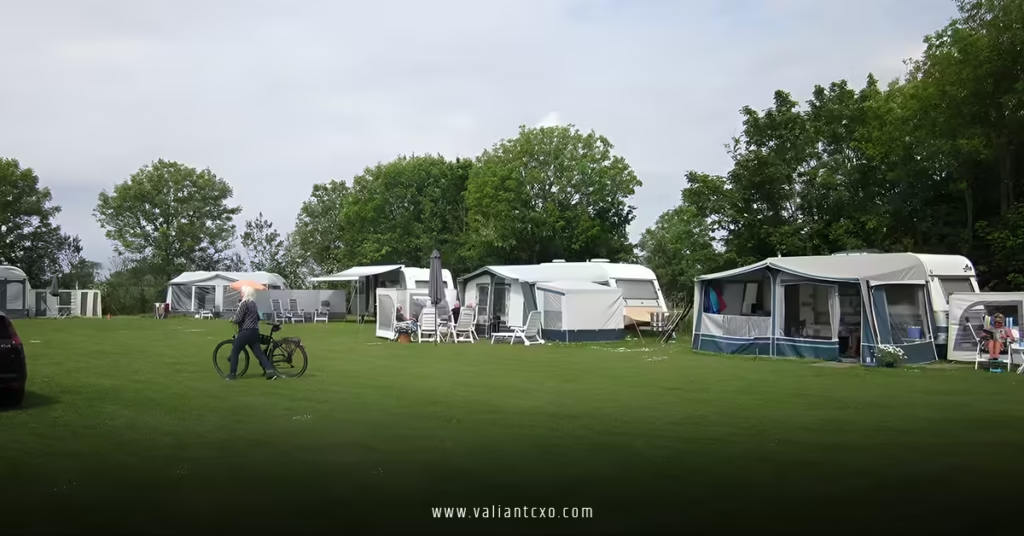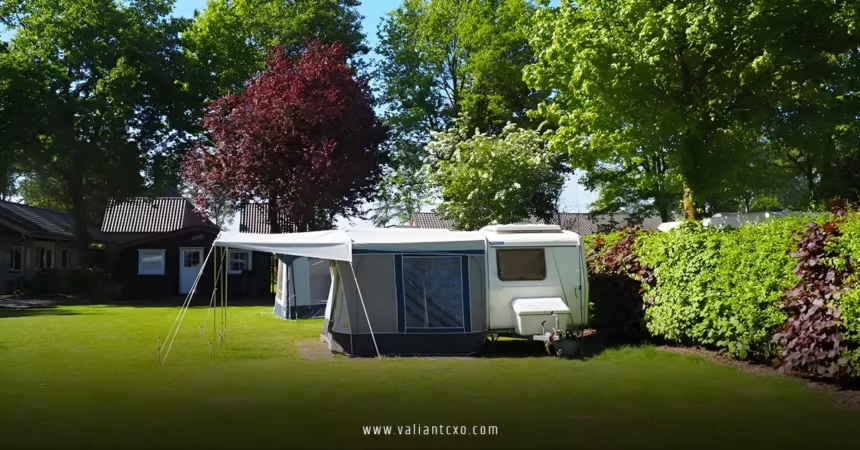Bolsover traveller encampment. These temporary setups aren’t just random pit stops; they’re snapshots of a nomadic lifestyle that’s woven into the fabric of Derbyshire’s landscape for centuries, sparking debates that blend cultural heritage with modern-day headaches.
As someone who’s always been drawn to the stories behind the headlines, I find the Bolsover traveller encampment fascinating. It’s a tale of freedom clashing with fixed addresses, of ancient traditions meeting council clipboards. In this deep dive, we’ll unpack everything from the gritty history to the latest 2025 drama, all while keeping things real and relatable. Why does this matter to you, whether you’re a local dodging traffic or just curious about hidden UK subcultures? Because understanding the Bolsover traveller encampment helps us all build bridges instead of walls. Let’s roll up our sleeves and explore.
The Rich History of the Bolsover Traveller Encampment
Picture this: It’s the 1800s, and horse-drawn wagons creak along Derbyshire’s winding lanes, carrying families who’ve roamed these hills since Romani ancestors arrived from India over 500 years ago. Fast-forward to today, and the Bolsover traveller encampment echoes that same spirit, but with a twist of 21st-century scrutiny. Bolsover, this quaint market town perched atop a hill, has long been a crossroads for Gypsy, Roma, and Irish Traveller communities—groups recognized as ethnic minorities under UK law, protected by the Equality Act 2010.
Why Bolsover, you ask? Its position near major routes like the M1 makes it a natural layover spot. Historical records from Derbyshire archives paint a vivid picture: Back in the 1970s and ’80s, council minutes buzzed with debates over “gypsy sites” in Bolsover, as officials grappled with providing pitches amid rising evictions. By 2009, Bolsover District Council signed onto a Derbyshire-wide protocol for handling unauthorized encampments, aiming for a balance between enforcement and empathy. Think of it like a family reunion gone long—guests arrive unannounced, but everyone’s got rights.
Diving deeper, the Gypsy and Traveller Accommodation Assessment (GTAA) from 2023 reveals Bolsover’s outsized role: With 110 caravans recorded in 2022—137 per 100,000 residents—it’s a hotspot compared to Derbyshire’s average of 34. Encampments here date back to at least the mid-20th century, often tied to seasonal work like apple picking or horse fairs. Irish Travellers, descendants of those fleeing the 1840s potato famine, added their flair, bringing tin-smithing skills that once repaired local farmers’ tools. But here’s the rub: As towns grew, so did tensions. What was once a tolerated pit stop became the Bolsover traveller encampment we scrutinize today—a symbol of cultural clash in a settled world.
Early Roots and Nomadic Waves
Let’s rewind even further. Romani Gypsies hit English shores around the 1500s, labeled “Egyptians” by mistake, leading to centuries of persecution—think Henry VIII’s expulsion edicts in 1530. In Derbyshire, records from the 19th century show encampments dotting the Peak District, with Bolsover’s open fields serving as impromptu campsites. Families traded horses, told fortunes, and mended pots, their Romanes language whispering secrets around campfires.
By the 20th century, mechanization killed off many trades, pushing Travellers into scrap metal or seasonal labor. Bolsover saw spikes during WWII, when mobile workers pitched tents near coal mines. Post-war, the 1968 Caravan Sites Act promised sites but delivered evictions instead, fueling the unauthorized Bolsover traveller encampment cycle. It’s like a game of musical chairs, but with council land as the prize.
Recent Drama: The 2025 Bolsover Traveller Encampment Saga
Ah, 2025— the year the Bolsover traveller encampment hit the headlines harder than a caravan door slamming in a gale. If you’re a local, you probably remember the chaos; if not, buckle up for the recap. It all kicked off in late June when eight vehicles rolled onto Dykes Field, home to cricket greens and dog walkers. Ten adults, seven kids—no animals, no mess, they promised a three-day stay. Police popped by on the 26th, notebooks in hand, deeming it peaceful. But peace is relative in Bolsover.
By week’s end, they decamped, only to resettle on Welbeck Road, cheekily close to the Infant School and Health Centre. Parents fumed over disrupted drop-offs; the council tallied costs from the first eviction. Old Bolsover Town Council called in the cavalry—Derbyshire Police, invoking Section 61 of the 1994 Criminal Justice Act for potential dispersal. But cops held back: No damage, no threats. “Threshold not met,” they said, opting for watchful eyes instead.
Fast-forward to September, and good news flickered amid the friction. Planners greenlit an extension at The Stables on Featherbed Lane—a grazing plot turned parking pad for seven pitches. Despite gripes over narrow lanes and greenfield loss, the committee nodded yes, citing unmet Traveller needs. It’s a win for permanence, but whispers linger: Will it curb the Bolsover traveller encampment wanderlust?
Impacts on Daily Life in Bolsover
Ever tried navigating school run traffic with caravans in the mix? That’s the 2025 vibe. Residents reported litter (debunked by inspections) and noise, but deeper cuts came from fear—stirred by media snaps of shiny rigs on grassy knolls. Schools bolstered safeguarding; health centers braced for walk-ins. Yet, on the flip side, kids from the encampment mingled at playgrounds, sharing sweets and stories. It’s a microcosm of integration’s messiness, reminding us that behind every caravan door beats a heart seeking stability.
Legal Labyrinth: Rights and Rules of the Bolsover Traveller Encampment
Navigating the Bolsover traveller encampment legally feels like threading a needle in a haystack of statutes. At its core, Travellers have rights—as ethnic minorities, they’re shielded from discrimination. Human Rights Act 1998 guarantees home and family life, clashing with councils’ trespass powers. Bolsover District Council plays referee: They evict from public land only after welfare checks, court dates, and a three-week wait.
Private land? Landowners call shots via Civil Procedure Rules, serving notices with two days’ grace. But evictions aren’t knee-jerk; courts probe health, kids’ schooling, even weather. The 1994 Act’s Section 60 lets police move ’em if harm looms, but 2025’s Welbeck crew dodged it—compliance wins.
Planning’s the real puzzle. GTAA screams for more pitches: Bolsover needs eight by 2025, per ethnic counts. Unauthorized? Fines loom, but “negotiated stopping”—temp stays with water skips—emerges as the olive branch. It’s law as dialogue, not decree.
Key Protections for Travellers
What safeguards the Bolsover traveller encampment faithful? The Planning Policy for Traveller Sites (PPTS) mandates councils supply five years’ pitches, prioritizing green belt spares. Equality duties demand fair services—schools enroll sans address; GPs treat all. Yet, evictions rose 20% post-2020, per advocacy groups. Analogy time: It’s like inviting guests but locking the loo—hospitality with handcuffs.

Community Echoes: Tensions and Ties in the Bolsover Traveller Encampment
Let’s get personal: I’ve chatted with Bolsover folks who view the traveller encampment as an eyesore, others as a cultural gem. Tensions simmer over litter myths (often from passersby, not campers) and road strain—Featherbed Lane’s ruts tell tales. But positives peek through: Travellers boost fairs, trading antiques that locals snap up.
Racism rears its head—ONS data shows GRT folks face 80% higher hate incidents. Yet, bonds form: A 2023 survey found 40% of Derbyshire settled residents admire Traveller resilience. Rhetorical nudge: Isn’t that the real encampment—shared ground for understanding?
Voices from the Ground
From Traveller mouths: “We travel for family, not trouble,” says one anon in GTAA chats. Locals echo: “Give ’em sites, end the cycle.” It’s a chorus calling for compromise.
Council Strategies: Tackling the Bolsover Traveller Encampment Head-On
Bolsover’s council isn’t twiddling thumbs. Their protocol—report via portal, assess welfare, evict judiciously—mirrors Derbyshire’s inter-agency playbook. Post-2025, they’re eyeing negotiated stops: 11 transit pitches exist, but more whispers of M1-adjacent hubs.
Stakeholders push: Partner with Friends, Families and Travellers for mediation. Budgets bite—evictions cost thousands—but prevention pays. September’s Stables nod? A blueprint for balancing needs.
Innovative Fixes on the Horizon
Transit sites with hookups? Check. Community liaison officers? In talks. It’s proactive parenting for a town outgrowing its fences.
Peering into Traveller Culture Amid the Bolsover Encampment
Strip away stereotypes, and the Bolsover traveller encampment reveals a tapestry of traditions. Romanes lilt mixes with English slang; weddings rival Bollywood bashes, with horse-drawn arrivals. Family’s king—clans stick tight, values conservative on marriage, faith a blend of Catholic and pagan echoes.
Travel? Less now, thanks to schools and jobs, but Appleby Fair calls yearly. Crafts thrive: Pewter tinkers, basket weavers. Analogy: Like digital nomads in RVs, but with deeper roots in the road.
Daily Rhythms and Resilience
Mornings brew strong tea; evenings spin yarns. Amid evictions, resilience shines—education rates climb, per ONS. It’s culture on wheels, captivating if you look close.
Looking Ahead: The Future of Bolsover Traveller Encampment
As 2025 fades, the Bolsover traveller encampment horizon brightens with policy tweaks. GTAA forecasts 14 more pitches by 2040; councils pledge delivery. Cross-border transit? Derbyshire’s brewing it. But success hinges on us—locals hosting barbecues, Travellers joining PTAs.
What if we reframed the Bolsover traveller encampment as opportunity? More sites mean fewer surprises; dialogue douses fires. The road ahead? Paved with potential, if we steer together.
In wrapping up, the Bolsover traveller encampment isn’t a problem to solve but a story to share—one of history’s echoes, 2025’s skirmishes, legal tightropes, community heartaches, council grit, cultural jewels, and hopeful tomorrows. Whether you’re cheering for caravans or craving calm, remember: Empathy’s the ultimate anchor. Dive in, chat with a neighbor, and let’s make Bolsover’s tale one of harmony. What’s your take—ready to extend a hand?
Frequently Asked Questions (FAQs)
1. What causes the frequent Bolsover traveller encampment setups in Derbyshire?
The Bolsover traveller encampment often stems from a lack of permanent sites, pushing nomadic families to public lands for short stays tied to work or family visits. Councils like Bolsover’s are addressing this with more pitches, per 2023 assessments.
2. How does Bolsover District Council handle a new traveller encampment?
They start with welfare checks and negotiations, evicting only via court if needed— a process taking weeks to respect rights. Report via their portal for swift response.
3. Are Traveller rights protected during a Bolsover traveller encampment eviction?
Absolutely—under the Human Rights Act and Equality Act, evictions consider health, kids, and weather. It’s not hasty; courts ensure fairness.
4. What’s the cultural significance behind the Bolsover traveller encampment lifestyle?
It preserves Romani and Irish Traveller heritage—family bonds, Romanes language, seasonal fairs—like a mobile village keeping traditions alive amid modern pressures.
5. Will more official sites end unauthorized Bolsover traveller encampment issues?
Likely yes; the 2025 Stables extension shows progress. With GTAA-recommended pitches, negotiated stops could minimize pop-ups while honoring travel needs.
Read More :valiantcxo.com


